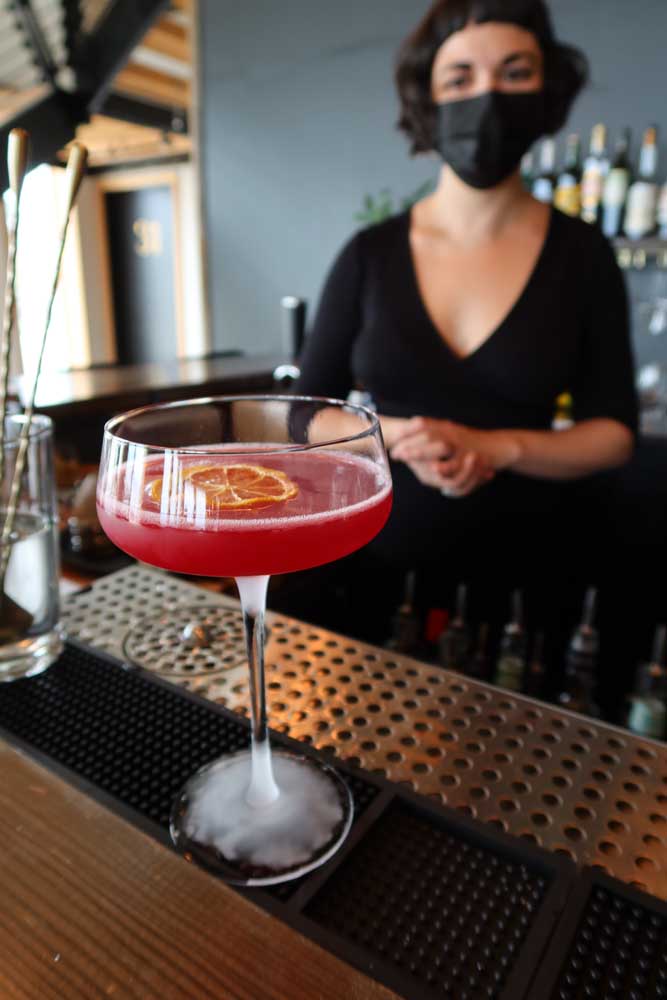Cocktail Time with Emily: The art of the garnish
Published 9:00 am Wednesday, September 1, 2021

- IMG_9539.JPG
As with fine cuisine, a cocktail’s appeal develops before the consumer even tastes it. Just like a chef’s intricate plating, a cocktail’s final presentation should always be part of the recipe’s consideration.
Trending
The frosted glass, the kind of ice used, fresh herb crowns or fruit, be it a twist of peel or a wheel of lemon, all have a certain effect on the drinker’s experience and the flavor of the cocktail itself.
As a craft cocktail bartender and imbiber, I have always appreciated the most acute attention to detail when it comes to the love labored for a cocktail. They say the devil is in the details and one of the most important details that sets apart a craft cocktail from any other mixed drink is the presentation.
The bar world has evolved toward a more artful and social-media-ready experience. A barkeep often has to be clever about maintaining consistency in their garnishes. Fortunately, when it comes to making cocktails at home there is more time and space to make an average home bar a craft one with just a little creativity, fresh ingredients and attention to detail with the garnish.
Trending
Mastering the citrus peel
One of the most utilized of the fruit garnishes is the citrus peel. To cut the peel, I prefer to use a Y vegetable peeler with a gripped handle. Using the peeler, cut a wide, thin swath from the top to the bottom of the fruit. Try to get a thick enough swath of peel so that there is a thin, almost translucent, layer of the pith of the fruit on the inside.
Another option is to use a paring knife instead of a peeler, but fruit tends to get slippery as it is peeled so I prefer the control offered by the peeler. In order to achieve sharper lines in the aesthetic of the twist, trim it with a paring knife to make the edges more uniform and give each end a diagonal cut.
Next, express the peel by holding it just above the cocktail between the pointer finger and thumb with the outside facing the drink and squeeze it lightly so the oils gently shower the cocktail, then twist it into a spiral and run it around the rim of the glass to completely utilize the oils before placing the peel into the cocktail or cut a small slit down the middle, balancing it on the rim of the glass.
Y peelers can also be useful for cutting thin ribbons of cucumber, rhubarb or celery for other skewered garnishes.
The trick to the spiral twist
If a thinner, spiral twist of peel is the desired garnish, I use a channel knife and cut the twist in a spiral pattern working from the top of the fruit at least one and a half rotations so there is enough peel to get a good curl.
To create the spiral, practice first by using the spiral handle of a long bar spoon as a guide, curling the twist around it and then, holding the twist together, carefully pull it off the handle to place in the cocktail. I prefer to curl the twist in my hands, however, so I can express the oils over the cocktail as I curl it.
Add more depth with dehydrated garnishes
Another great way to utilize citrus as a garnish is to thinly slice wheels (using a mandolin works best), and dehydrate them using a fruit and vegetable dehydrator. This technique can also work well with apple slices in fall cocktail recipes.
Not only does this add a lovely, rustic quality to the cocktail aesthetic, but dehydrating the fruit actually concentrates the flavors, adding another level of depth to the cocktail experience.
The craft cocktail world is endlessly ripe with opportunities for creativity and innovation. Whether enjoyed by yourself after a long day, or made to share with friends and guests, when quality ingredients are utilized and a cocktail is made with passion, the results will undoubtedly be satisfying with every sip.
As always, please drink responsibly and never waste a drop! Cheers!









